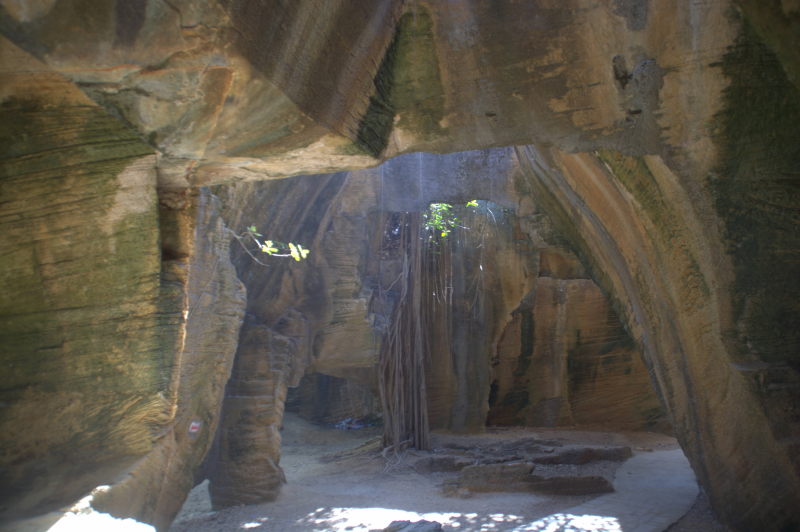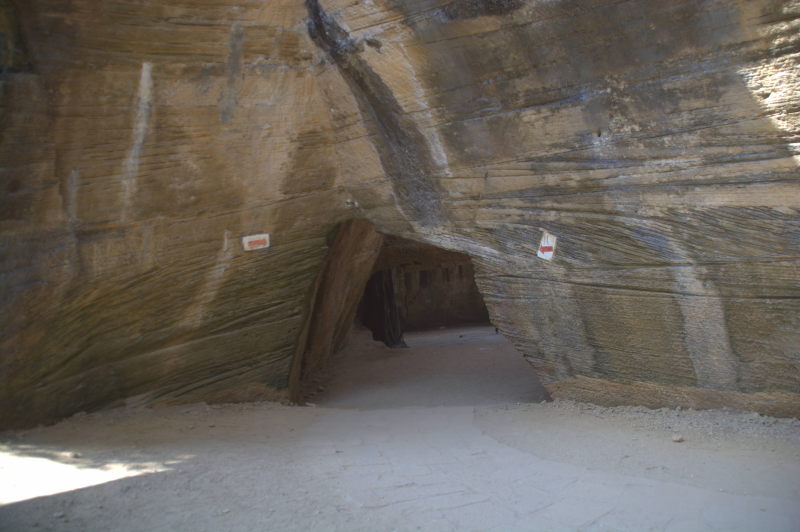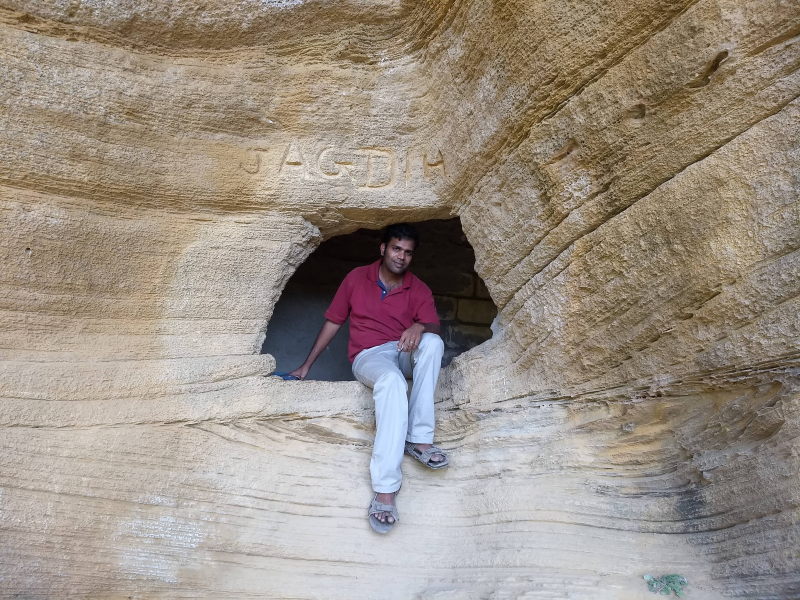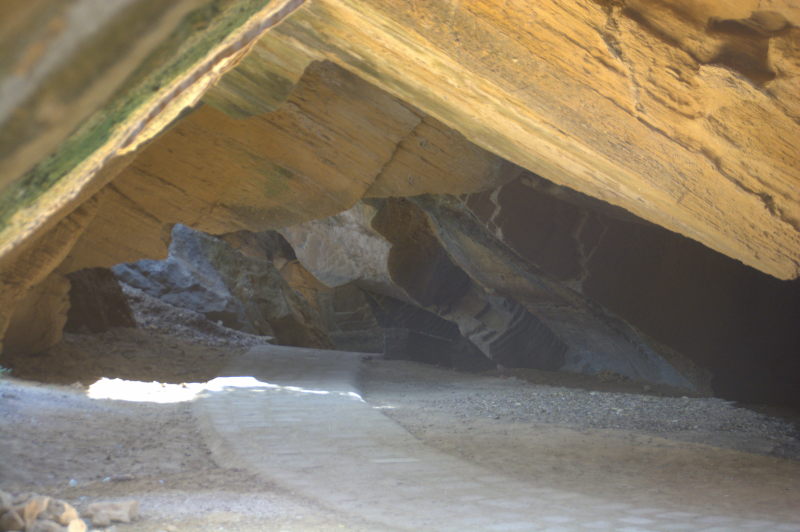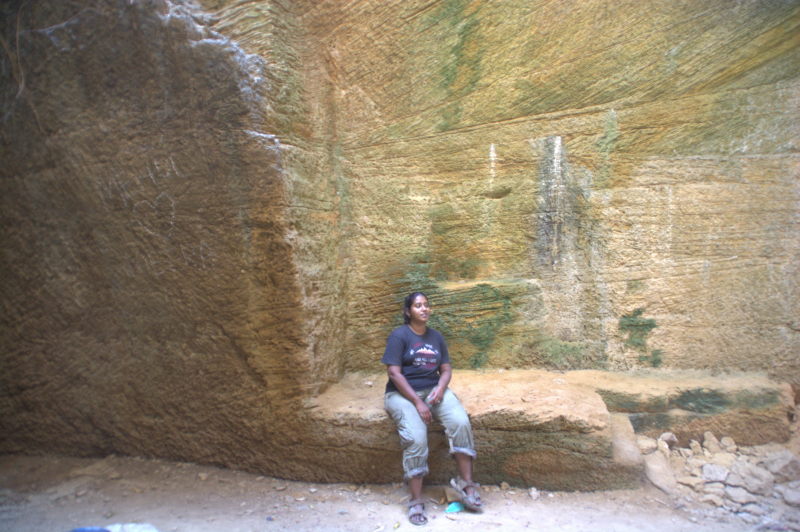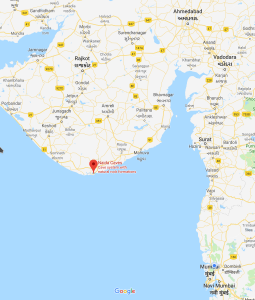The island of Diu is one part of Daman and Diu union territory. It is about 60km from the temple city of Somnath in Gujarat. At Diu, There are some historic places from the Portuguese rule, such as the Diu fort. Diu is also known for its tranquil and not very touristy beaches. Since Diu is quite far from the major and most populated cities of India, not many Indians make it a destination. So Diu never overflows with tourists. But of all the destinations in Diu, there is one that stands out. A cluster of caves formed by uniquely coloured reddish brown rocks stand in a secluded corner of Diu city. The caves are called Naida caves. Tourist packages often miss the caves for reasons unknown to me. But that makes it a perfect destination for those who seek a quiet afternoon, walking through caves of multi-coloured rocks and watching the effects of light filter through them.
About Naida caves
Naida caves are a series of interconnected caves formed in a deposit of rocks near the sea in the city of Diu. The rocks look reddish brown in colour and have several layers. The lines of the layers can be seen on the face of the rocks.
There are two theories about how the caves were formed. One theory says that the caves were formed when the sea invaded the rocks during a flood. Looking for a way to escape, the water hammered the rocks continuously during the tide and carved tunnels as an outlet. Eventually the sea retreated and left the tunnel system behind. Another theory says that the tunnel system is man-made. The Portuguese were said to have the made the interconnected caves as a series of passageways leading to a fort in the area. There is no information about the formation of the caves either on the site or online.
To me, the second theory about the Portuguese making the caves sounds ludicrous. The Portuguese already had the militarily capable Diu fort 2 km north of the Naida cave system. We saw no forts or any remains around the Naida caves, so the system doesn’t look like any covert route to a fort. But there is nothing conclusive to say if the cave system is natural or man-made (by some civilisation other than the Portuguese). Naturally interconnected cave systems have existed for millenia in different parts of the world. Cave exploration and discovering naturally interconnected passages is a common activity in Meghalaya and also abroad in Indonesia, Malaysia, Thailand and New Zealand. That said, the Naida caves are so wonderfully interconnected that the passages for a ring-route, helping you finish exactly where you started. That sounds too rare to be a natural phenomena.
It’s possible that the Naida caves are both. People possibly discovered the caves in a partially connected state and then decided to open up a ring-route. We’ll not know for sure, because there is no initiative to document the caves anywhere. For now, just be there and enjoy the caves, the trees hugging the caves, the rock colours and the effect of sunlight filtering softly through them. In fact, that is why people around Diu and Gujarat use Naida caves for modelling shoots and pre/post-wedding albums.
What will I get to see in Naida caves?
A system of passes passes through the caves. The central passage forms a ring route. So you can start clock-wise or counter-clockwise. Here are some things to notice.
- Cavernous chambers with narrow slits allowing light to enter. You can play a game of spotlight, by moving in and out of the spotlit zones.
- Passages with high and low ceilings. At some places, trees grow from the ground and either stick to the walls or break past the ceiling to grow taller.
- Reddish brown walls all around you. If you are wearing a different colour such as a pastel shade, say yellow or pink, the walls will frame you very well for several photos.
- Creepers along the walls forming natural ladders. But there is no telling how strong or weak their grip is. Do not give into the temptation to use the creepers to attempt wall climbing!
- Openings in the wall that lead to a parallel passage.
- Openings in the wall that lead to dark chambers big enough to accommodate one or two persons.
How to get to Naida caves
Naida caves are situated inside Diu city. It is on a road that branches off the city’s main road and ends at Naida caves. From Diu’s transport hubs, i.e. airport, taxi terminal, bus terminal or Diu fort, it is possible to take a taxi to Naida caves. If you don’t have your own vehicle, you can book a day tour of Diu city with one of the taxis, who will show you all around Diu. But they may not include Naida caves by default, because we did not see any taxis in the parking lot of Naida. So please insist that you want to see the caves in your Diu day tour.
Here are the options of transport to reach Diu.
Air: Diu has an airport. Flights are available only from and to Mumbai. But if you use that option, you will be directly inside Diu city.
Rail: Diu island has been left behind by the Indian railways. There are no railway tracks or railway stations on the island. The nearest railway station is in the town of Una, 18 km away. But the railway line that passes through Una railway station has only 4 trains per day. So it is better to use the most connected railway station in the area, i.e. Veraval, the town with Somnath Shiva temple. There are several trains from the most important cities of India to Veraval. It is 67 km away from Diu. Buses, shared taxis and dedicated taxis run from Veraval to Diu. The taxi drivers walk around the taxi stand (near Shreemann Narayana temple) shouting out for passengers to Diu, so you cannot miss them.
Road: Gujarat state buses and taxis run from Veraval and Bhavnagar to Diu. You can reach one of the two cities via rail and then use an appropriate road transport.
Self-drive: That’s what we did. The previous day, we had visited the Somnath temple. So it was a cosy 60 km drive to Diu island. Self-driving also allows you to explore Diu for much cheaper. You do not need to pay taxi fare. Plus, being a union territory, Diu has cheaper petrol. To reach Diu from the rest of India (other than Somnath / Porbandar / Dwarka), you should take the NH-8 Mumbai – Surat – Vadodara – Ahmedabad – Udaipur – Jaipur – New Delhi highway. At Ahmedabad or at Vadodara, take the diversion towards Rajkot / Bhavnagar. If you want to cover the Gir lion sanctuary along the way, then use the Rajkot – Gir – Junagarh – Diu route. Otherwise the Bhavnagar – Mahuva – Una – Diu route works better. If you use the Bhavnagar route, you can also cover an ancient Harappan village named Lothal and a blackbuck sanctuary at Velavadar on the way.
Conclusion
India has several less explored locations in infrequently visited destinations. The city of Diu and its Naida caves are among such examples. The more you are able to cover the corners of India, the more you get to see. So pack your bags, plan a trip around Gujarat and make sure to visit Diu and Naida caves along the way.


